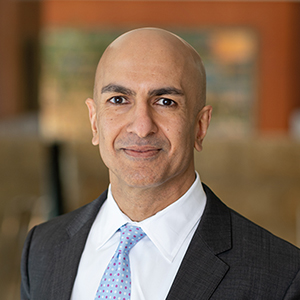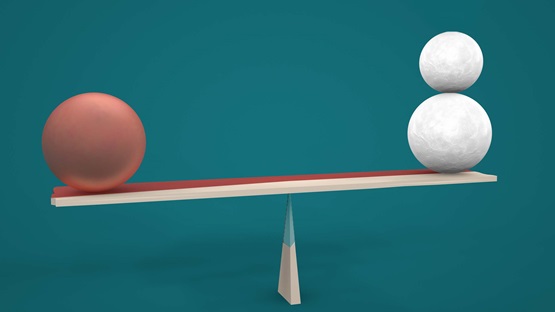This essay is also available on Medium.
Major General Grant
My dear General …
I write this now as a grateful acknowledgment for the almost inestimable service you have done the country. I wish to say a word further. … When you turned Northward East of the Big Black, I feared it was a mistake. I now wish to make the personal acknowledgment that you were right, and I was wrong.
Yours very truly
A. Lincoln
July 13, 1863
(Letter sent to recognize Grant’s successful capture of Vicksburg, Mississippi)
I often remind myself of this quote. While I am not Abraham Lincoln, if Lincoln could admit when he was wrong, then I should be able to as well. When inflation accelerated last year, I argued that it was likely due to transitory factors which would soon pass. That hasn’t happened. This essay lays out the basic arguments I made then, the data that has come since, what I got wrong, and the potential implications for monetary policy going forward.1
Inflation
In the September 2021 Summary of Economic Projections (SEP), I estimated inflation would be 4.2 percent for 2021 and 1.8 percent for 2022. Actual inflation for 2021 ended up being 5.8 percent, and I just increased my forecast this week to 4.5 percent for 2022. PCE inflation for the 12 months through January was 6.1 percent (Figure 1).
What happened, and why were my forecasts about inflation wrong?
Supply
I argued that labor supply was being held back by a combination of fears of COVID-19, enhanced unemployment benefits and child care issues triggered by school closings. While we didn’t see an immediate uptick in labor supply when schools reopened and unemployment benefits expired in the fall, we have nonetheless seen remarkably strong job growth, around 582,000 per month over the past six months, even with the Delta and Omicron waves.
So labor supply has materialized. However, I expected this increase in workers to relieve pressure on businesses, supply chains and wages. As more workers came back to work, temporary inflationary pressures would relax. That hasn’t happened with wage growth picking up to around 5 percent and businesses continuing to struggle to find all the workers they need (Figure 2).
I also expected supply chains to eventually sort themselves out as COVID-19 was brought under control, workers returned and companies adjusted. While large businesses warned us that supply chains would be stressed for all of 2022, there has been less improvement than I had hoped to see at this point. For example, in February U.S. motor vehicle assemblies were still 25 percent below the level of February 2020.
And now there is a substantial risk of new disruptions in China, which could further challenge global supply chains: COVID-19 cases have exploded in Hong Kong and are now rising steadily on the mainland. Many experts argued that Omicron is so contagious that China sticking to its zero-COVID-19 policy would require extensive lockdowns, which we are now seeing with the announcement of such measures for 17 million people in Shenzhen. Unfortunately, the Chinese government has not authorized the distribution of western vaccines, which are much more effective than their current domestic ones, while they wait for their scientists to develop their own mRNA vaccine.
The shocking invasion of Ukraine makes almost all these problems more challenging with oil and other commodity prices soaring and tremendous geopolitical and economic uncertainty, in addition to the terrible human suffering of the Ukrainian people.
Demand
Switching to consumption: I assumed the artificially high level of goods consumption we saw during the pandemic would rebalance toward services as the economy reopened and normal activity resumed once the virus started to recede. The virus has receded in the U.S., workers are returning to their offices, and services activity has picked up, but I am surprised that goods consumption hasn’t pulled back. That is, while services consumption is climbing toward its pre-COVID-19 trend, goods consumption remains elevated above its trend (Figure 3). This is one of my biggest surprises.
Unless Congress passed further fiscal stimulus, we had some confidence in how long it would take for the enacted stimulus to flow through the economy, and it was, by definition, temporary. I focused not only on the timing of the government transfers to households and businesses but what was happening to household balance sheets. We knew household balance sheets were much stronger than before the pandemic, because the COVID-19 relief packages were so much larger than the income that was lost due to the pandemic. But I expected those excess savings to be spent down fairly quickly, especially for lower-income households.
The saving rate for households has fallen back down to around pre-pandemic levels, but it doesn’t appear that households are dissaving (Figure 4). So how are they funding their high levels of consumption? It appears they are funding it out of current income (Figure 5). That suggests to me that this robust economic activity and the associated high inflation may be sustained and in fact might not be transitory.
State governments tell a similar story. It is true that there were large transfers from the federal to state governments in the COVID-19 relief packages, and some of that money has yet to be spent. But many state governments are also now generating surpluses, in some cases record surpluses, from their normal tax collection. This too doesn’t seem to be a transitory phenomenon that is simply the pass-through from one-time COVID-19 spending.
Inflation Expectations
The good news is that long-term inflation expectations appear to be well-anchored with the Federal Open Market Committee’s (FOMC) inflation credibility strong, as financial markets indicate they expect inflation to return to our target (Figure 6).
Making Sense of High Inflation
So how do I put this all together? The first explanation is that these demand and supply imbalances are in fact still transitory but will simply take substantially longer to normalize than I had expected (and longer than we can tolerate without running the risk of destabilizing inflation expectations). The second explanation is that the massive fiscal and monetary intervention in response to COVID-19 has moved the economy to a higher-pressure, higher-inflation equilibrium, with people earning more and spending more than before. We do know that the wealth effect is a real phenomenon, and both the stock market and house prices are up roughly 30 percent relative to pre-pandemic levels; even households who don’t own stocks or homes have on average stronger balance sheets than before the pandemic. Perhaps this is leading people to be more confident and simply spend more. Either way, the FOMC must act to bring the economy back into balance.
Implications for Monetary Policy
We know that monetary policy operates with a lag, but forward guidance can have an immediate effect. The FOMC has already made a profound shift in the past six months with its forward guidance on the path of the federal funds rate and the balance sheet, and I believe the SEP we just released is sending a strong signal that further reinforces our commitment to achieving our inflation target. The first hike we announced this week demonstrates that we will follow through on our guidance with action.
I have made large adjustments to my own expected federal funds rate path over the past six months. For example, in September, my SEP submission had the federal funds rate at 0 to 0.25 percent for year-end 2022. I increased it to 0.50 to 0.75 percent in the December 2021 SEP and then increased it again to 1.75 to 2.00 percent in the most recent SEP. My estimate of the nominal neutral rate remains at 2.00 percent, where I have had it for several years.
If my first explanation of the enduring high inflation noted above is right (that it will still prove transitory but take much longer than expected), then I believe the FOMC will need to remove accommodation and get modestly above neutral while the inflationary dynamics unwind. However, if my second explanation noted above is right (that the economy is in a high-pressure, high-inflation equilibrium), then the FOMC will need to act more aggressively and bring policy to a contractionary stance in order to move the economy back to an equilibrium consistent with our 2 percent inflation target. Over the course of this year, while we are moving to what I expect will be a neutral policy stance, we will get information to help us determine how much further we may need to go.
Endnote
1 The comments are my own and do not necessarily represent the view of the Federal Open Market Committee or others in the Federal Reserve System.




